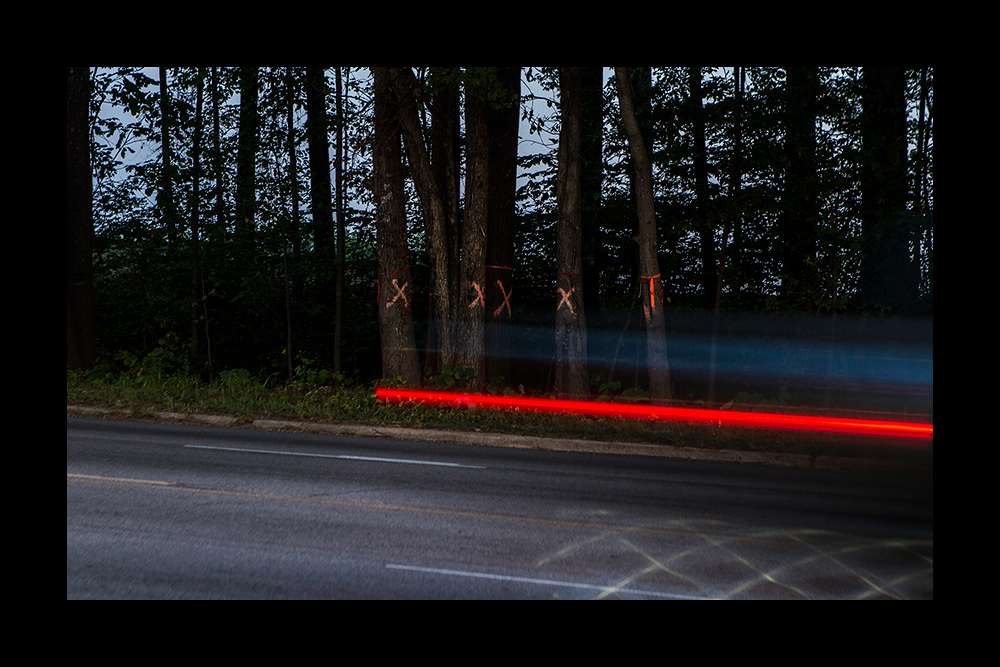Shannon Davis: Controlled Burn
With decades of design and motion-directing experience, Shannon Davis chose photography as her medium for making art. Her conceptual projects feature a deep awareness of balancing form and content, exploring mood and motion within a single frame. She shares her creative passions as a professor at the Savannah College of Art and Design. Her project “I Got Somethin’ To Show You” was a Lens Culture Exposure Award Winner, Ain’t Bad Magazine Top 100 Photography Series, and top ten finalists in the Duke University Lange/Taylor Prize. Her artist book “Controlled Burn” has been acquired by the Bainbridge Island Museum of Art, University of Washington Special Collections, Museum of Fine Arts Houston Libraries & Archives, University of Georgia Hargrett Rare Book and Manuscript Library, Savannah College of Art and Design Library, Baylor University Book Arts Collection, Ohio University Libraries, University of Colorado-Boulder, and Rochester Institute of Technology as well as private collections. It was selected for the Self-Published Photo Book Show at Davis-Orton Gallery, Griffin Museum of Photography, and chosen by Paul D’Amato for Filter Photo: Back on the Shelf show.
Instagram: @shannondavisphotos
The U.S. was built on the idea of movement, setting up new roots, and like many, I am a transplant and have lived in the South longer than anywhere else. I ask locals, “How long do I need to live in the South till I’ll be considered a southerner?” Their answer is always the same, NEVER. Controlled Burn is a conceptual photography series that explores the smoldering act of assimilation and the pursuit of home. To illustrate narrative experiences in unfamiliar territory, I combine familiar, domestic objects into uncommon assemblages. The wit and juxtaposition of the art directed still life’s convey observations and the challenge to belong while navigating a new place. The combinations become a metaphor for feeling out of place while offering a reframe of regional stereotypes, inviting the viewer to question what is being represented and how it resonates with their idea of the South. The series incorporates 20 photos and a hand-made artist book.
The artist-made conceptual photography book is housed in a box 4.75 x 2.75 x 1.75″ the exact dimensions of kitchen matches. It contains 20 art-directed photographs folded in double-sided accordion style. A 6-page text pamphlet of prose that accompany the concept behind the images. Applied to the matchbox interior base is a photo of burned matches. Digitally printed. Signed and numbered edition of 50.
Controlled Burn
Looking out the airplane window, it was clear I was someplace different.
Having grown up in the North, the South looked like an open wound
with its red clay ripping through the green pines.
Locals enjoyed quizzing me, “Do you know why the clay is so red?
It’s from the blood of the Confederate soldiers who died here.”
The graphic answer made clear this soil is not merely dirt.
It is precious. Like kin.
The landscape is a dramatic stage displaying over ripe narratives
challenging realism and myth. Along the roadsides, acres of trees
have burnt black bases. Farmers intentionally cause the fires to
manage undergrowth, while the ash fortifies the soil.
They call it “controlled burn.”
Controlled burn is a feeling.
The challenge of navigating new terrain with foreign tools.
The smolder of bucolic memories confined to gilded frames.
The fester of social and civil justice.
One day, my boss told me, “You’re like a sliced up dolphin in an ocean of sharks.”
A few years later, another boss put his arm around my shoulder and said,
“You are doin’ a real good job, but you’re gonna have to learn to sugarcoat things.
You may be right but you need to say it, differently”
Along the busiest street, the artery called Peachtree,
a green Ford truck drove past with three men.
WACK. I brought my hand up to my head and felt blood.
A woman nearby, waiting at the bus stop asked,
“What happened?” Looking down at the sidewalk I said,
“I just got hit by a turtle! It’s still alive, but its shell is cracked.”
She replied, “You should take that home and eat it. They’re real good.”
1987, there was an “all-white” county. I joined the march.
Rumor had it the night before, the local gun stores had sold out of ammunition.
We walked five a breast with linked arms. Silent.
Our footsteps were the only sound of progress.
After 20 years, I’ve lived here longer than anywhere else.
I asked the locals, “How long, do I need to live in the South
o be considered Southern?”
Their answer, was always the same.
“ N E V E R”
How to Purchase:
To purchase the limited edition artist book, contact the artist smdavis.64@gmail.com
To purchase prints, contact Spalding Nix Fine Art, spaldingnix@gmail.com
Posts on Lenscratch may not be reproduced without the permission of the Lenscratch staff and the photographer.
Recommended
-
Paccarik Orue: El MuquiDecember 9th, 2025
-
Kinga Owczennikow: Framing the WorldDecember 7th, 2025
-
Richard Renaldi: Billions ServedDecember 6th, 2025
-
Ellen Harasimowicz and Linda Hoffman: In the OrchardDecember 5th, 2025
-
Linda Foard Roberts: LamentNovember 25th, 2025




























































